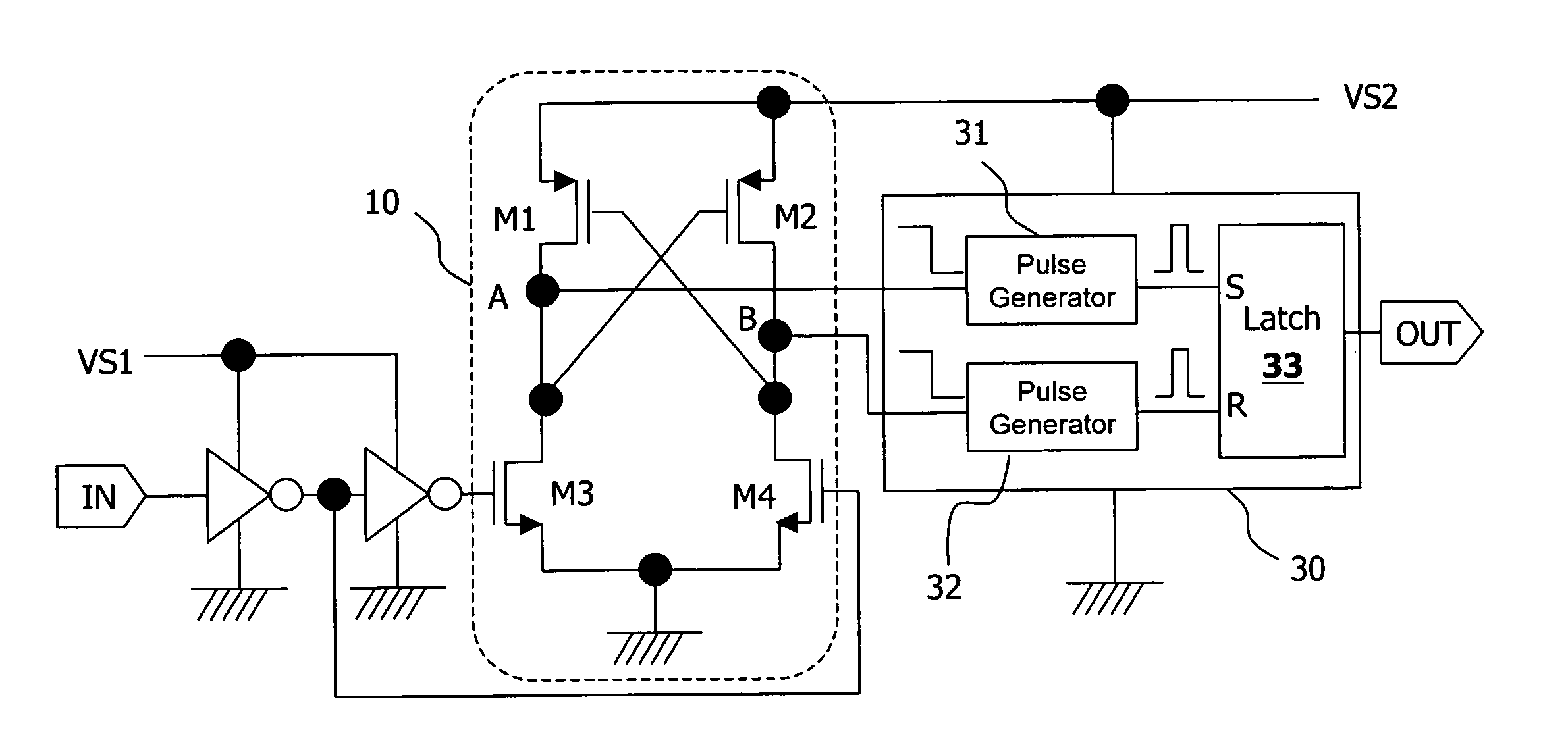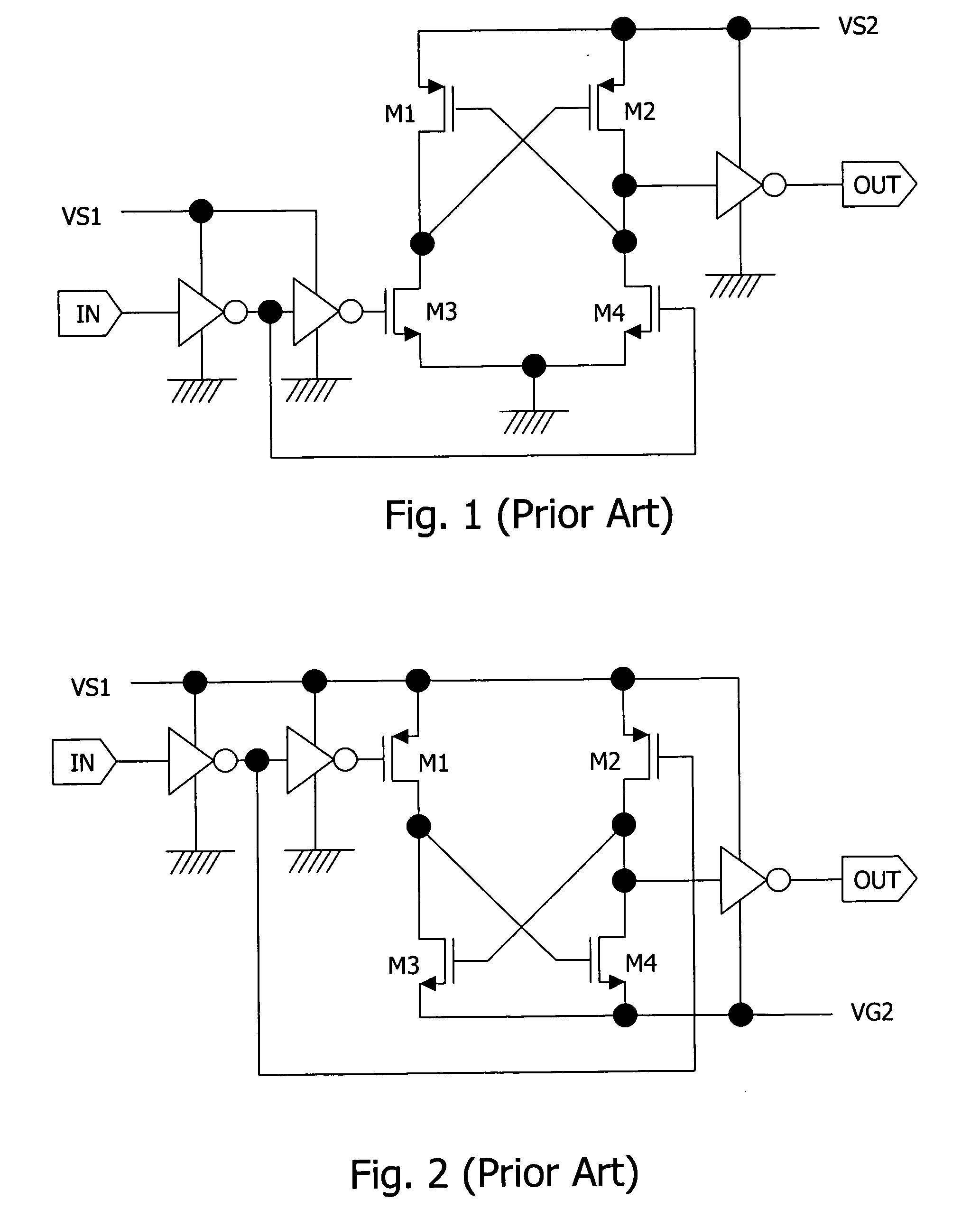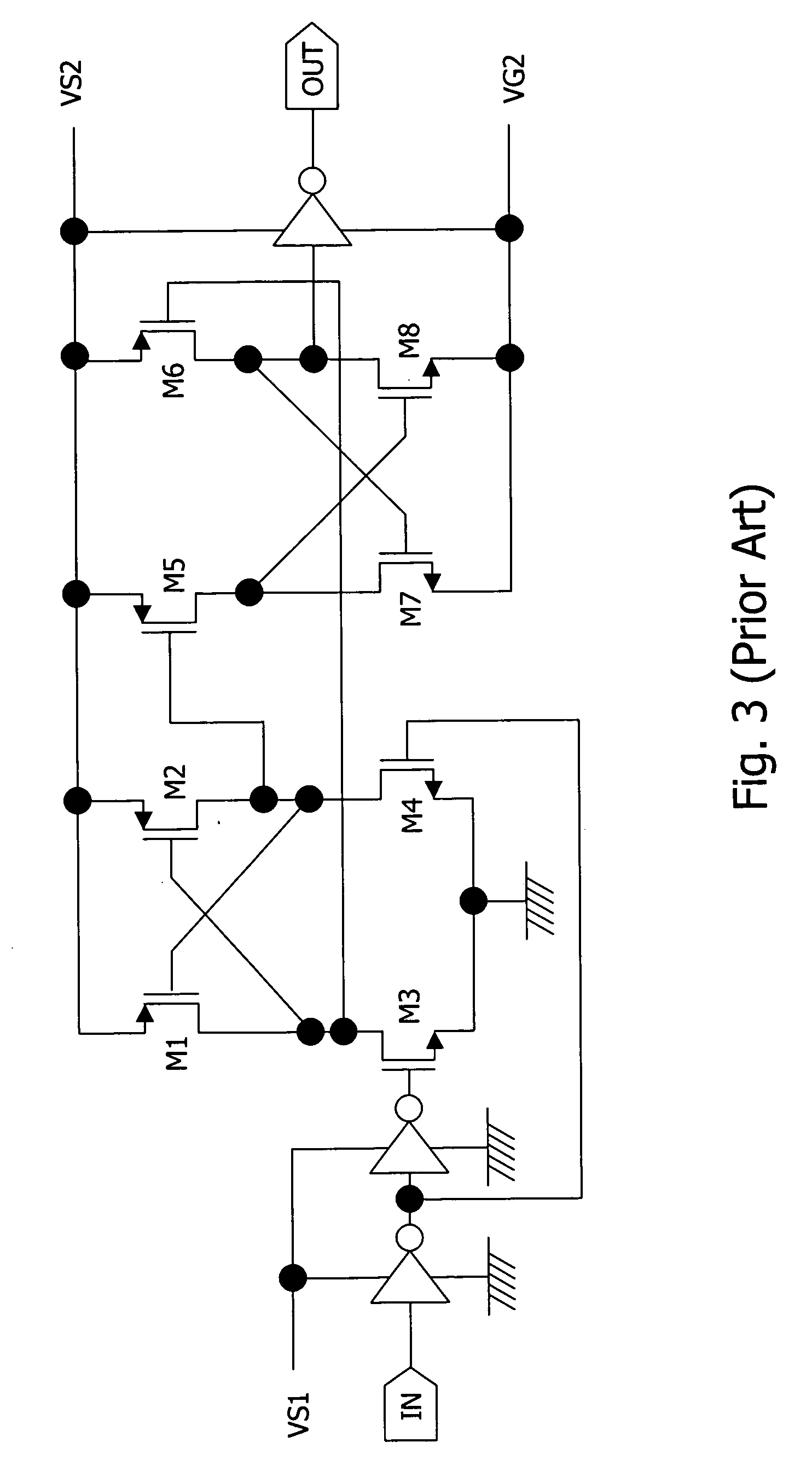Level shift circuit and method for the same
a level shift circuit and level shift technology, applied in logic circuits, pulse automatic control, pulse techniques, etc., can solve the problem of slow output level switching speed, achieve faster output level switching, and speed up output level switching
- Summary
- Abstract
- Description
- Claims
- Application Information
AI Technical Summary
Benefits of technology
Problems solved by technology
Method used
Image
Examples
first embodiment
[0029]FIG. 6 schematically shows a first embodiment according to the present invention. As shown in the figure, a level shift circuit comprises a pair of PMOS transistors M1 and M2, and a pair of NMOS transistors M3 and M4 (the PMOS and NMOS pairs constituting a basic level shift circuit 10). In addition to the above, the level shift circuit according to this embodiment further comprises an output circuit 30. The output circuit 30 includes pulse generators 31 and 32, and a latch circuit 33. The pulse generator 31 generates a pulse according to the falling edge of the signal at the node A. The pulse is received by the set input S of the latch circuit 33 so that the latch circuit 33 outputs a signal of high level. Likely, the pulse generator 32 generates a pulse according to the falling edge of the signal at the node B; the pulse is received by the reset input R of the latch circuit 33 so that the latch circuit 33 outputs a signal of low level. The output circuit 30 operates between a...
second embodiment
[0031]FIG. 7 shows the present invention. As shown in the figure, besides the basic level shift circuit 20, the level shift circuit further includes an output circuit 40. The output circuit 40 includes pulse generators 41 and 42, and a latch circuit 43. The pulse generator 41 generates a pulse according to the rising edge of the signal at the node A; the pulse is received by the set input S of the latch circuit 43 so that the latch circuit 43 outputs a signal of high level. Likely, the pulse generator 42 generates a pulse according to the rising edge of the signal at the node B; the pulse is received by the reset input R of the latch circuit 43 so that the latch circuit 43 outputs a signal of low level. The output circuit 40 operates between a high level which is the first high operational voltage VS1 and a low level which is VG2, so its output signal has a high level of VS1 and a low level of VG2, which are exactly the desired signal levels to be shifted to by the level shift circu...
third embodiment
[0033]FIG. 8 shows the present invention. The purpose of this circuit is to shift the signal levels from VS1 / 0V to VS2 / VG2. Note that in this embodiment, it does not require two basic level shift circuits (eight transistors) as that shown in FIG. 3, but only requires one basic level shift circuit with four transistors (either one of the basic level shift circuits 10 and 20, shown to be the basic level shift circuit 10 in the figure). The output circuit 50 operates between a high level which is VS2 and a low level which is VG2, so that its output signal has a high level of VS2 and a low level of VG2, which are exactly the desired signal levels to be shifted to by the level shift circuit.
[0034]The embodiments of FIGS. 6-8 explain the first concept of the present invention, i.e., by the level switching of the voltage signal at a critical node, which is much faster, a pulse is generated to drive a latch circuit, so that an output signal is capable of switching its levels in a much short...
PUM
 Login to View More
Login to View More Abstract
Description
Claims
Application Information
 Login to View More
Login to View More - R&D
- Intellectual Property
- Life Sciences
- Materials
- Tech Scout
- Unparalleled Data Quality
- Higher Quality Content
- 60% Fewer Hallucinations
Browse by: Latest US Patents, China's latest patents, Technical Efficacy Thesaurus, Application Domain, Technology Topic, Popular Technical Reports.
© 2025 PatSnap. All rights reserved.Legal|Privacy policy|Modern Slavery Act Transparency Statement|Sitemap|About US| Contact US: help@patsnap.com



